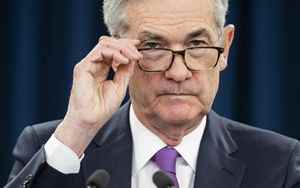(Finance) – The last session of the week continues under the banner of prudence for the markets on which fears of stagflationor rather high rate of prices and slow economic growth, furthermore undermined by the increase in interest rates, already applied by the Fed and BoE and, weakened by the war in Ukraine.
After running one of the fastest monetary policy moves in history, the Fed appears poised to implement a series of 50 basis point rate hikes. Even if the pace of the rises seems to be predetermined in the final analysis the Fed’s political path will largely depend on the strength of the labor marketstarting with the April jobs report.
At the press conference following the May FOMC meeting, the president Powell he said the Committee is “very attentive” to inflation risks and will opt for “continuous” increases of 50 basis points to bring the Fed Funds rate to “2 or 3%” by the end of the year. The FOMC also announced that the budget reduction it will start in June and reach $ 95 billion per month by September 1.
Overall, the political decisions announced at the May FOMC meeting were largely anticipated, dampening much of the market reaction. That said, bond investors have found solace in the fact that the Fed chairman has excluding a rate hike of 75 basis points and the slow acceleration of the budget reduction has allayed fears of a more aggressive rate of reduction.
The critical question is “What will be the next step in politics?“. Is the Fed’s hike trajectory already “priced” by the markets? “We remain skeptical about this” – he says Jeffrey Cleveland, Chief Economist of Payden & Rygel –. “After all, six months ago, the Fed was pledging to keep rates at zero to achieve maximum employment. Six months later the FOMC is moving” rapidly “towards neutrality, because the labor market is” unsustainably hot. ” . This sudden about-face – Cleveland explains – “made us cautious. We do not rule out that the Fed’s position may change again“.
At the post-meeting press conference, President Powell repeatedly pointed out that the “job opening vacancy ratio” it’s a key indicator of labor market strength. “As we had already highlighted – underlines the expert – the almost 12 million vacant jobs in March far exceed the supply of unemployed workers. Policymakers appear to be hoping the job offer will return, offsetting excess demand for workers and, coupled with tighter financial conditions, leads to an easing of wage pressures. In turn, a slowdown in wage growth will comfort policymakers that supply-demand dynamics are becoming more sustainable and that a wage-price spiral will not materialize. “
The problem from our perspective – adds Cleveland – is that, to the extent that the labor market remains “hot”, the Fed could be forced to move in an even more aggressive direction. As of the May FOMC meeting, we expect two further hikes of 50 basis points, in June and July. After that, as President Powell said Wednesday, even if inflation “is starting to fall”, the FOMC is unlikely to stop, rather “it would go back to hikes of 25 basis points”. Further hikes of 25 basis points in September, November and December will bring the Fed funds rate to 2.75% by the end of the year (which coincides with our basic view).
The Chief Economist of Payden & Rygel concludes by stating that “while we agree with President Powell that a month’s reading does not tell us much, we will know more after the decline noted in employment report for April (on the agenda today, ed). Signs of a rebound in the labor supply will indicate that the Fed’s next moves are already ‘priced’ by the markets, while signs of a still hot labor market (falling unemployment rate, faster wage growth) will point in the opposite direction. “.
(Photo: Salvatore Cavalli)
